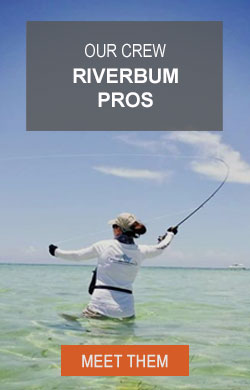Angler Angles
Sometimes fish hold in locations where the best angle of approach is very obvious, however, at other times there may appear to be several angles that might work. Most anglers are likely to take the easiest approach even if it might not be the best. There are many factors that can determine which angle is best; here are some ideas that may help you to determine the best way to approach fish in different situations:
1. Remember that fish face upstream and cannot see directly behind them but that they can see a line or even leader when it lands directly above them. For this reason it is often good to approach wary fish from behind but at enough of an angle to allow you to land your line away from the fish. This requires an upstream and across approach and cast and is the way to go most often when dry fly fishing in relatively even current.
2. In situations with uneven currents or very obvious pockets in slow water, evaluate the drift you can obtain from different angles. Sometimes casting across currents and getting a dead drift either isn't possible even with lots of mending or curve casts. For this reason it may be best to position yourself directly downstream of the fish standing in the same current lane and casting with care not to land your line to heavily on the water above the fish.
3. Very picky fish in heavily fished waters can often see virtually any leader. The best angle of approach for these kind of fish is a downstream or down and across cast with enough slack to allow some dead drift. This makes it so that your fly gets to the fish before your leader. This angle does require some stealth and a little longer cast so you aren't detected.
4. Fish often hold underneath banks, logs, and other debris. Approaching from across the stream is often a good way to ensure that you get the fly as close as possible to the bank but may require an upstream curve cast or mend to ensure a good drift. Another way to do this is to approach from the bank side and simply drop your fly from on top of the bank or debris and allow it to drift with little or no line in the water.
5. Remember to stay low when approaching fish. The higher you get in relation to the position of the fish the more likely it becomes that the fish will see you and spook. Use the refractive qualities of the water's surface or use riffled or rough water between you and the fish to hide yourself.
6. Whenever possible approach in shadows of trees or rocks to hide your profile. The worst sun angle is at your back because it creates a dark shadow on the side of your body that the fish see. Even though the sun may illuminate you and cause a few glare issues it is actually better to approach with the sun in your face to avoid spooking fish.
This is probably a lot to think about when you're planning your approach to a fish but practice and think about these ideas and you'll become a lot more likely to not spook fish and to get effective presentations to them.






